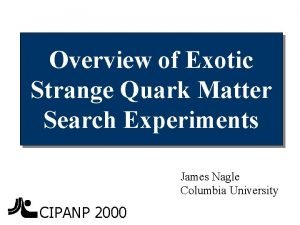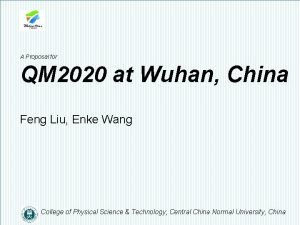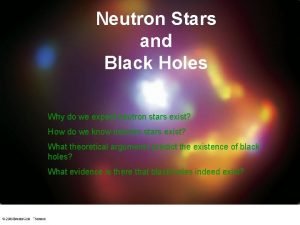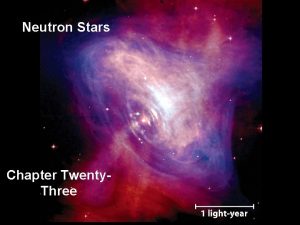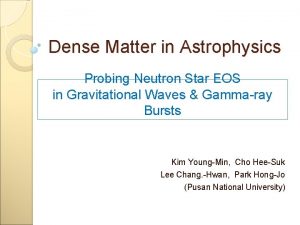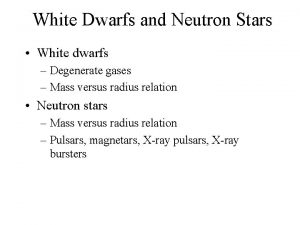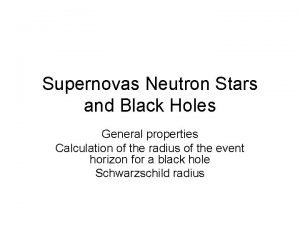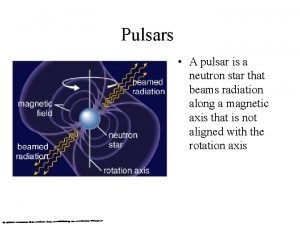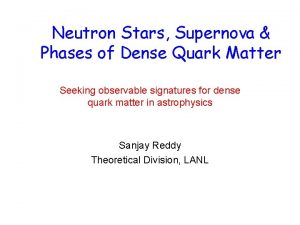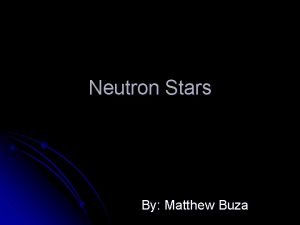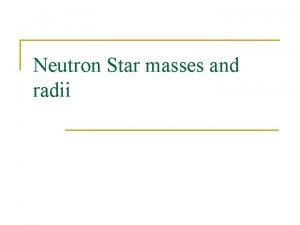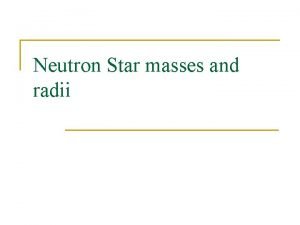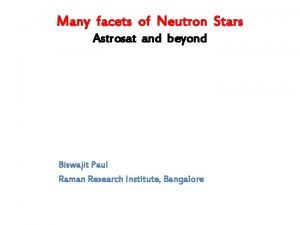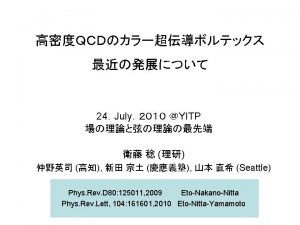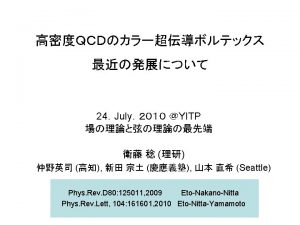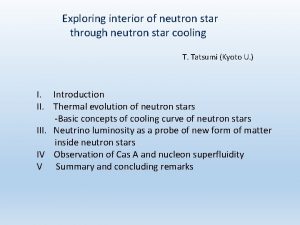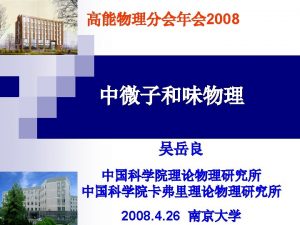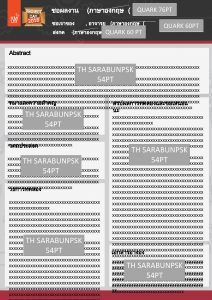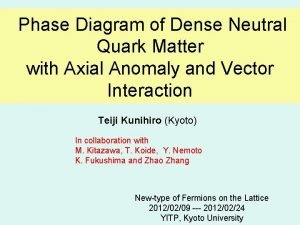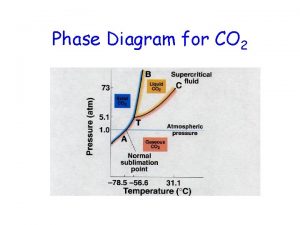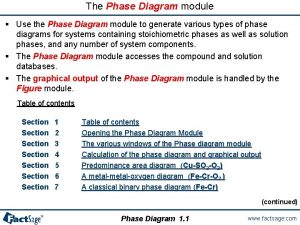Phase diagram of neutron star quark matter in













- Slides: 13

Phase diagram of neutron star quark matter in nonlocal chiral models A. Gabriela Grunfeld Tandar Lab. – Buenos Aires ARGENTINA In collaboration with PLAN OF THE TALK • Motivation • Non-local chiral quark models • Numerical results • Conclusions D. Gomez Dumm N. N. Scoccola D. Blaschke

Motivation The understanding of the behavior of strongly interacting matter at finite temperature and/or density is a subject of fundamental interest Applications in: § Cosmology (early Universe) § Physics of RHIC § Physics of neutron stars

Problem: the study of strong interactions at finite temperature and/or density is a nontrivial task; rigorous theoretical approaches are not available yet • Development of effective models for interacting quark matter that obey the symmetry requirements of the QCD Lagrangian • Inclusion of simplified quark interactions in a systematic way NJL model : the most simple and widely used model of this type The extension to NJL-like theories including nonlocal quark interactions represents a step towards a more realistic modeling of QCD. Several advantages over the NJL model: consistent description of loops and anomalies, some description of confinement, etc. Successful description of meson properties at T = = 0 Bowler, Birse, NPA(95); Plant, Birse, NPA(98); Scarpettini, DGD, Scoccola, PRD(04)

Formalism Euclidean action at T, = 0 – Case of two active flavors mc (current quark mass), G and H parameters of the model We consider two alternative ways of introducing nonlocality : Model I (Instanton Liquid Model inspired) Model II (One Gluon Exchange interaction inspired) Here, r(x) and g(x) are nonlocal form factors, and

The partition function for the model at T, = 0 is given by We proceed by bosonizing the model, thus we introduce s and D bosonic fields and integrate out the quark fields Mean field approximation (MFA) : the bosonic fields are written as and fluctuations are dropped :

The corresponding potential WMFA(T, fc) for finite temperature T and chemical potential is obtained by replacing Matsubara frequencies ωn=(2 n+1) p T The thermodynamical potential per unit volume reads then Here S-1 (inverse of the propagator) is a 48 x 48 matrix in Dirac, flavor, color and Nambu-Gorkov spaces (4 x 2 x 3 x 2)

The determinant can be analytically calculated : where with f = u, d , c = r, g, b Here we have defined and Due to the nonlocality, and are here momentum-dependent quantities

The mean fields and can be obtained from the coupled gap equations : In quark matter, the chemical potential matrix can be expressed in terms of the quark chemical potential ( = B/3), the quark electric charge chemical potential Q and the color chemical potential 8 required to impose color neutrality Q acts on flavor space, T 8 over color space. The chemical potentials fc are given by

NEUTRON STARS (quark matter + electrons) Electric and color charge neutrality where + Beta equilibrium : (no neutrino trapping assumed)

Numerical results For the nonlocal regulators we choose a smooth Gaussian form: Model parameters mc , G and L fixed so as to reproduce the empirical values of the pion mass and the pion decay constant at T = = 0, and leading to a condensate In this way, one obtains: → GL 2 = 15. 41 mc = 5. 1 Me. V L = 971 Me. V Model II → GL 2 = 18. 78 mc = 5. 1 Me. V L = 827 Me. V Model I There is no strong phenomenological constraint on the parameter H. Hence we consider here values of H/G in the range from 0. 5 to 1. 0

Typical behavior of MF quantities as functions of for some representative values of T ( case H/G = 0. 75 ) Model II

Phase diagrams for different values of the ratio H/G Model II

Summary We have studied some chiral quark models with effective nonlocal covariant separable quark-quark and quark-antiquark interactions at finite T and . We find that: • Different quark matter phases can occur at low T and intermediate : normal quark matter (NQM), superconducting quark matter (2 SC) and mixed phase (NQM-2 SC) states. • In the region of interest for applications to compact stars (medium and low T), for the standard value H/G = 0. 75 models I and II predict the presence of a mixed 2 SC-NQM phase. The latter turns into a pure 2 SC phase for larger H/G ratios. • Model I (ILM inspired) shows stronger SC effects. However, it leads to a relatively low value of TC ( = 0) in comparison with lattice expectations. Model II leads to a larger quark mass gap, and a larger value of TC (about 140 Me. V), though SC region is smaller. • The critical T for the second order 2 SC-NQM phase transitions rises with for Model I while it is approximately -independent for Model II. This can be understood from the different dependences associated with the diquark gaps in both models. To be done: – – Extension to larger (strangeness, color-flavor locked phase) Inclusion of vector-vector channels, hadronic matter effects, … Implications on compact star sizes & radii …
